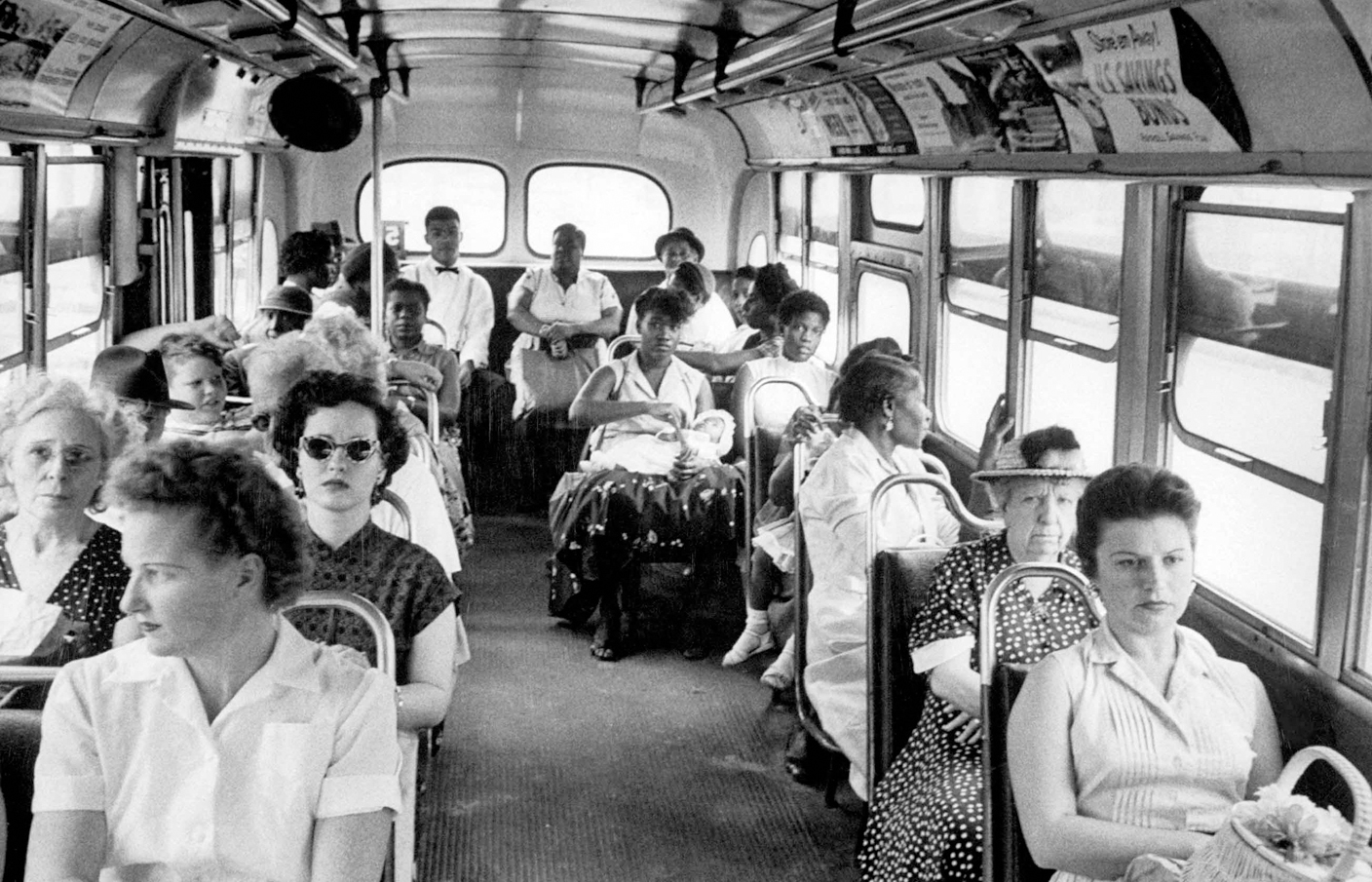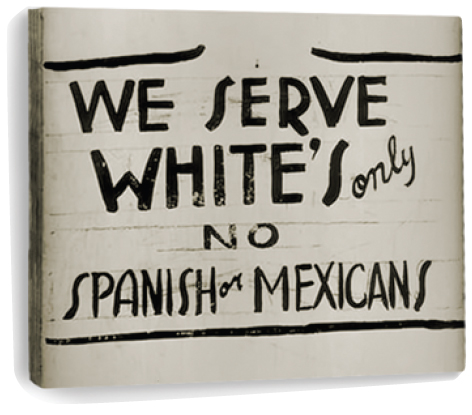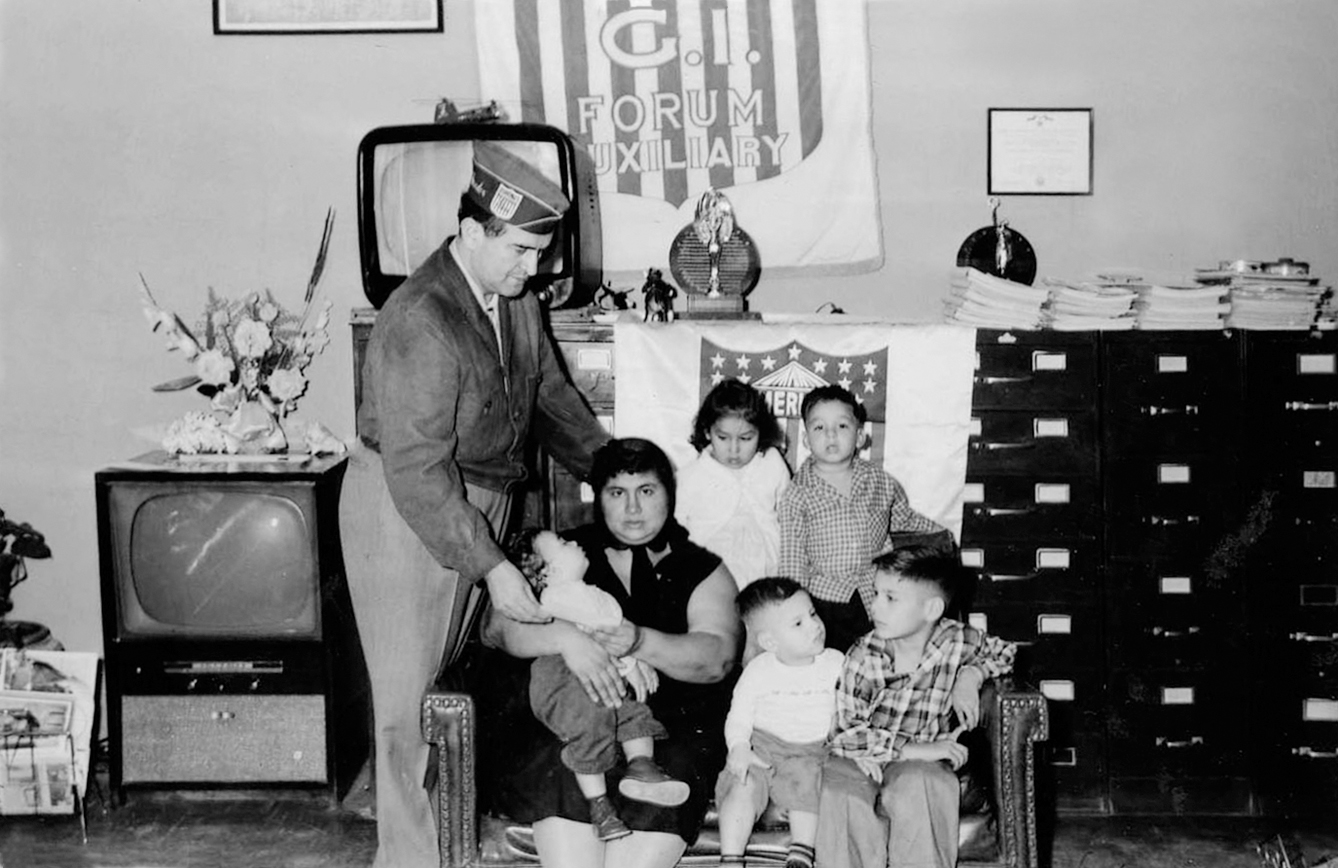Blacks and Mexican Americans Push for Their Civil Rights.
Printed Page 724 Chapter Chronology
Blacks and Mexican Americans Push for Their Civil Rights. "I spent four years in the army to free a bunch of Frenchmen and Dutchmen," an African American corporal declared, "and I'm hanged if I'm going to let the Alabama version of the Germans kick me around when I get home." Black veterans along with civilians resolved not to return to the racial injustices of prewar America. The migration of two million African Americans to northern and western cities meant that they could now vote and participate in ongoing struggles to end discrimination in housing and education. Pursuing civil rights through the courts and Congress, the National Association for the Advancement of Colored People (NAACP) counted half a million members.

In the postwar years, individual African Americans broke through the color barrier, achieving several "firsts." Jackie Robinson integrated major league baseball, playing for the Brooklyn Dodgers, and won the Rookie of the Year Award in 1947. In 1950, Ralph J. Bunche received the Nobel Peace Prize for his United Nations work, and Gwendolyn Brooks won the Pulitzer Prize for poetry. Still, little had changed for most African Americans, especially in the South, where violence greeted their attempts to assert their rights. Armed white men prevented Medgar Evers (who would become a key civil rights leader in the 1960s) and four other veterans from voting in Mississippi. A mob lynched Isaac Nixon for voting in Georgia, and an all-white jury acquitted the men accused of his murder. Segregation and economic discrimination were widespread in the North as well.
In waging the Cold War, the superpowers vied for the allegiance of newly independent nations with nonwhite populations, and Soviet propaganda repeatedly highlighted racial injustice in the United States. Secretary of State Dean Acheson noted that systematic segregation and discrimination endangered "our moral leadership of the free and democratic nations of the world."
"My very stomach turned over when I learned that Negro soldiers just back from overseas were being dumped out of army trucks in Mississippi and beaten," wrote Truman. Risking support from southern white voters, Truman spoke more boldly on civil rights than any previous president had. In 1946, he created the President's Committee on Civil Rights, and in February 1948 he asked Congress to enact the committee's recommendations. The first president to address the NAACP, Truman asserted that all Americans should have equal rights to housing, education, employment, and the ballot.

As with much of his domestic program, Truman failed to act aggressively on his bold words. Congress rejected his proposals for national civil rights legislation, although some northern and western states did pass laws against discrimination in employment and public accommodations. Running for reelection in 1948 and hoping to appeal to northern black and liberal voters, Truman issued an executive order to desegregate the armed services, but it lay unimplemented until the Korean War, when the cost of segregation to military efficiency became apparent. Although actual accomplishments fell far short of Truman's proposals, desegregation of the military and the administration's support of civil rights cases in the Supreme Court contributed to far-reaching changes.

Discussion of race and civil rights usually focused on African Americans, but Mexican Americans fought similar injustices. In 1929, they had formed the League of United Latin American Citizens (LULAC) to combat discrimination and segregation in the Southwest. Like black soldiers, Mexican American veterans believed, as one insisted, that "we had earned our credentials as American citizens." Problems with getting their veterans' benefits spurred the formation of a new organization in 1948 in Corpus Christi, Texas — the American GI Forum. Dr. Héctor Peréz García, president of the local LULAC and a Bronze Star combat surgeon, led the GI Forum, which became a national force for battling discrimination and electing sympathetic officials.
"Education is our freedom," read the GI Forum's motto, yet Mexican American children were routinely segregated in public schools. In 1945, with the help of LULAC, parents filed a class action suit in southern California, challenging school districts that barred their children from white schools. In the resulting decision, Mendez v. Westminster (1947), a federal court for the first time struck down school segregation. NAACP lawyer Thurgood Marshall filed a supporting brief in the case, which foreshadowed the landmark Brown decision of 1954 (as discussed in chapter 27). Efforts to gain equal education, challenges to job discrimination in employment, and campaigns for political representation all demonstrated a growing mobilization of Mexican Americans in the Southwest.